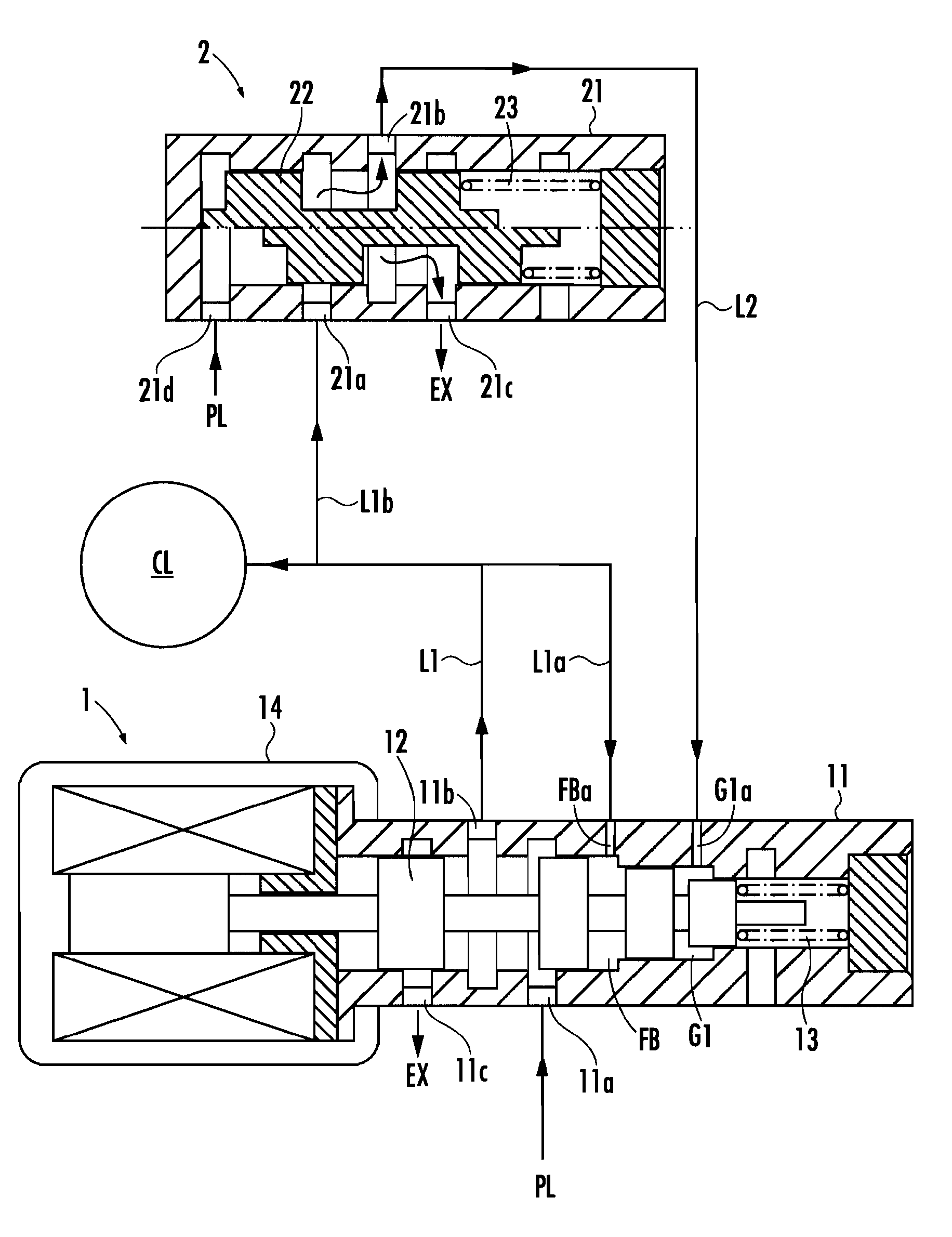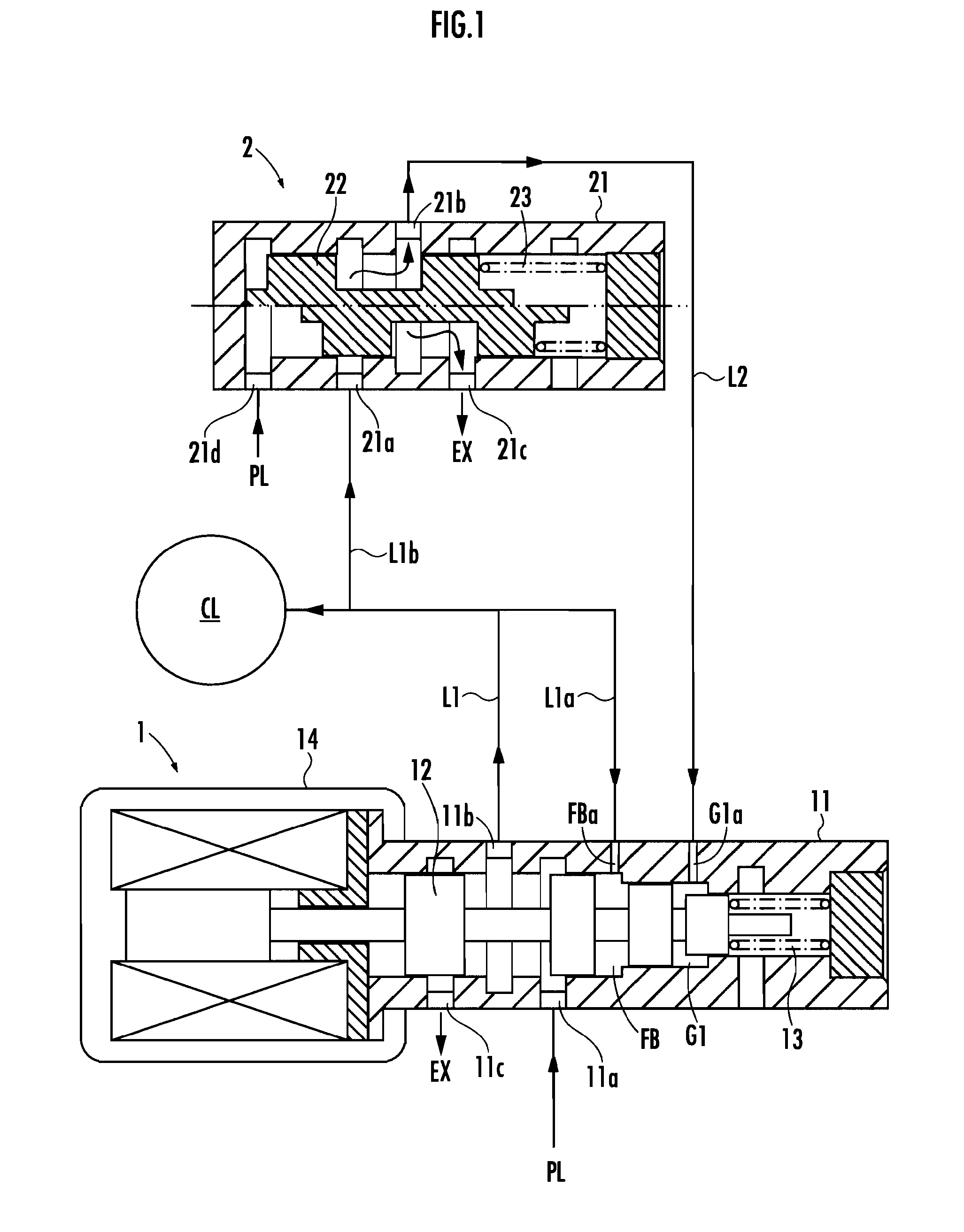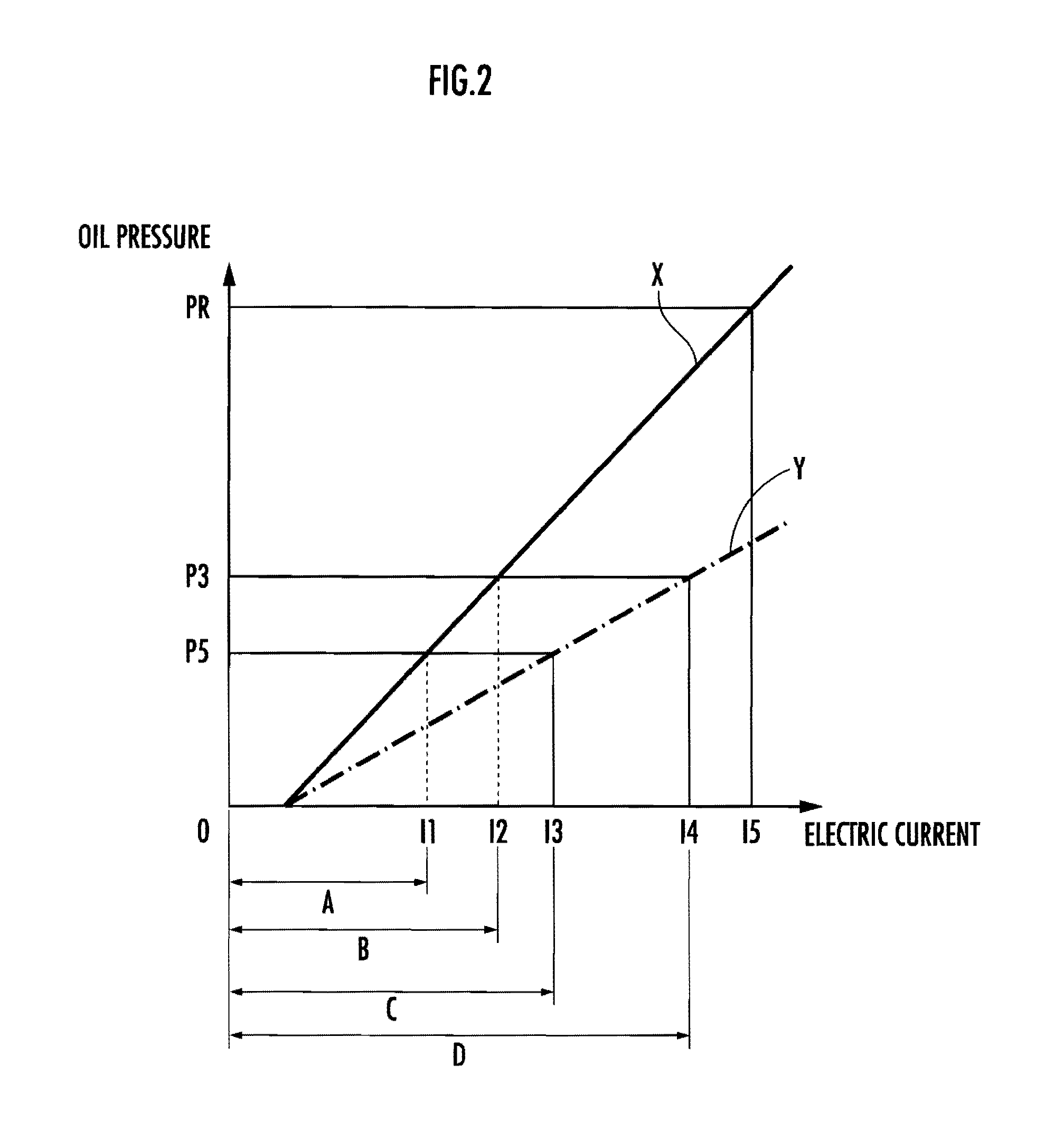Hydraulic control device
a technology of hydraulic control device and engagement element, which is applied in the direction of non-mechanical actuated clutches, clutches, gearing elements, etc., can solve the problems of poor controllability of the output oil pressure for engaging the engagement element, and achieve the effect of improving controllability, simple structure and reducing the number of components
- Summary
- Abstract
- Description
- Claims
- Application Information
AI Technical Summary
Benefits of technology
Problems solved by technology
Method used
Image
Examples
first embodiment
[0027]A first embodiment of the present invention will be described in detail with reference to FIG. 1 and FIG. 2. A hydraulic control device of the first embodiment is provided with a linear solenoid valve 1 configured to regulate a line pressure PL and supply it to a wet multi-plate clutch CL equivalent to an engagement element of an automatic transmission, a shift valve 2 supplied with an output oil pressure from the linear solenoid valve 1, and a transmission control unit TCU (not shown) equivalent to a controller configured to control the linear solenoid valve 1 and the shift valve 2.
[0028]The linear solenoid valve 1 is a normally close typed valve which is closed in a state where no electric current is applied (non-conducting state), and is composed of a sleeve 11, a spool 12 slidably inserted in the sleeve 11, a spring 13 biasing the spool 12 toward the left side of FIG. 1, and a linear solenoid 14 capable of biasing the spool 12 toward the right side of FIG. 1 against a bias...
second embodiment
[0049]A second embodiment of the present invention will be described in detail with reference to FIG. 4 through FIG. 6. Similar to the first embodiment, the hydraulic control device of the second embodiment is provided with the linear solenoid valve 1 configured to regulate the line pressure PL and supply it to the wet multi-plate clutch CL, and the shift valve 2.
[0050]In the second embodiment, a circular second gain switching chamber G2 is defined in the linear solenoid valve 1 by the sleeve 11 and the spool 12 at a position right to the feedback chamber FB. Similar to the first gain switching chamber G1, the second gain switching chamber G2 is also configured in such a way that the surface area of the spool 12 constituting the end surface toward the linear solenoid 14 (left side) is greater than the surface area of the spool 12 constituting the end surface toward the spring 13 (right side).
[0051]The sleeve 11 is drilled with a second gain switching port G2a in communication with t...
third embodiment
[0065]A third embodiment of the present invention will be described in detail with reference to FIG. 7 and FIG. 8. The hydraulic control device of the third embodiment is provided with the linear solenoid valve 1 configured to regulate the line pressure PL for outputting, and the shift valve 2 to which the output oil pressure of the linear solenoid valve 1 is supplied.
[0066]The linear solenoid valve 1 in the third embodiment is identical to that in the first embodiment.
[0067]The shift valve 2 in the third embodiment selectively supplies the output oil pressure from the linear solenoid valve 1 to an actuation oil pressure chamber 31 serving as a driving source for driving a shift fork 3 which in turn drives a sleeve disposed in the wet multi-plate clutch CL or an intermeshing mechanism (not shown. It is acceptable that the intermeshing mechanism has a synchromesh function.).
[0068]The shift valve 2 of the third embodiment will be described in detail hereinafter. The sleeve 2 of the sh...
PUM
 Login to View More
Login to View More Abstract
Description
Claims
Application Information
 Login to View More
Login to View More - R&D
- Intellectual Property
- Life Sciences
- Materials
- Tech Scout
- Unparalleled Data Quality
- Higher Quality Content
- 60% Fewer Hallucinations
Browse by: Latest US Patents, China's latest patents, Technical Efficacy Thesaurus, Application Domain, Technology Topic, Popular Technical Reports.
© 2025 PatSnap. All rights reserved.Legal|Privacy policy|Modern Slavery Act Transparency Statement|Sitemap|About US| Contact US: help@patsnap.com



